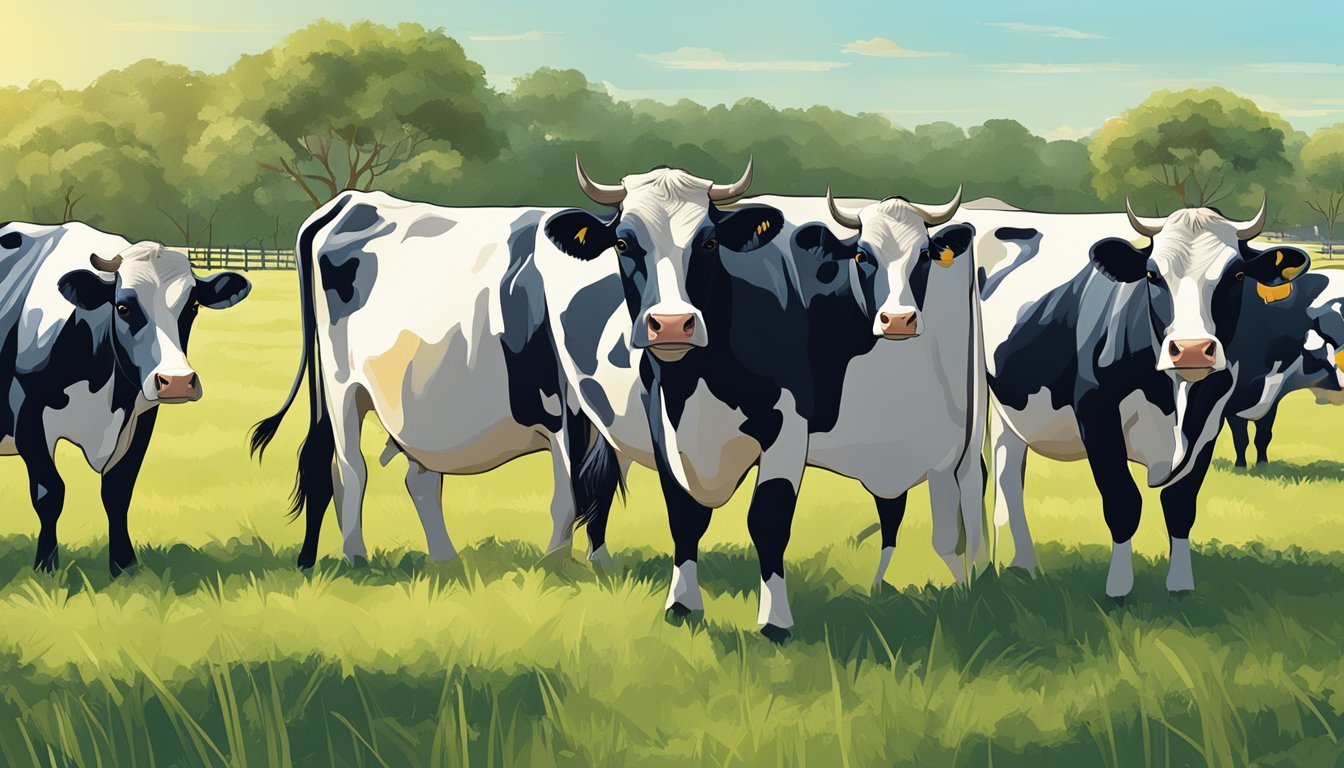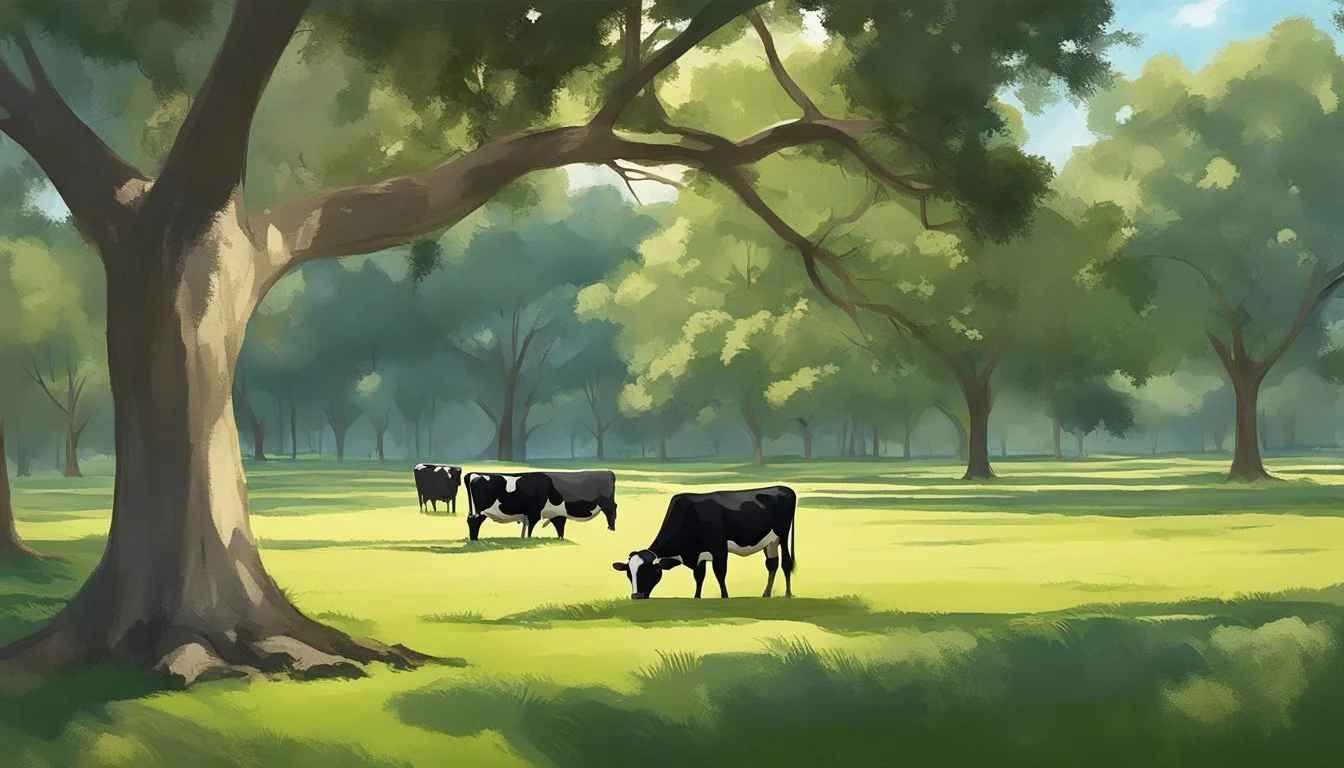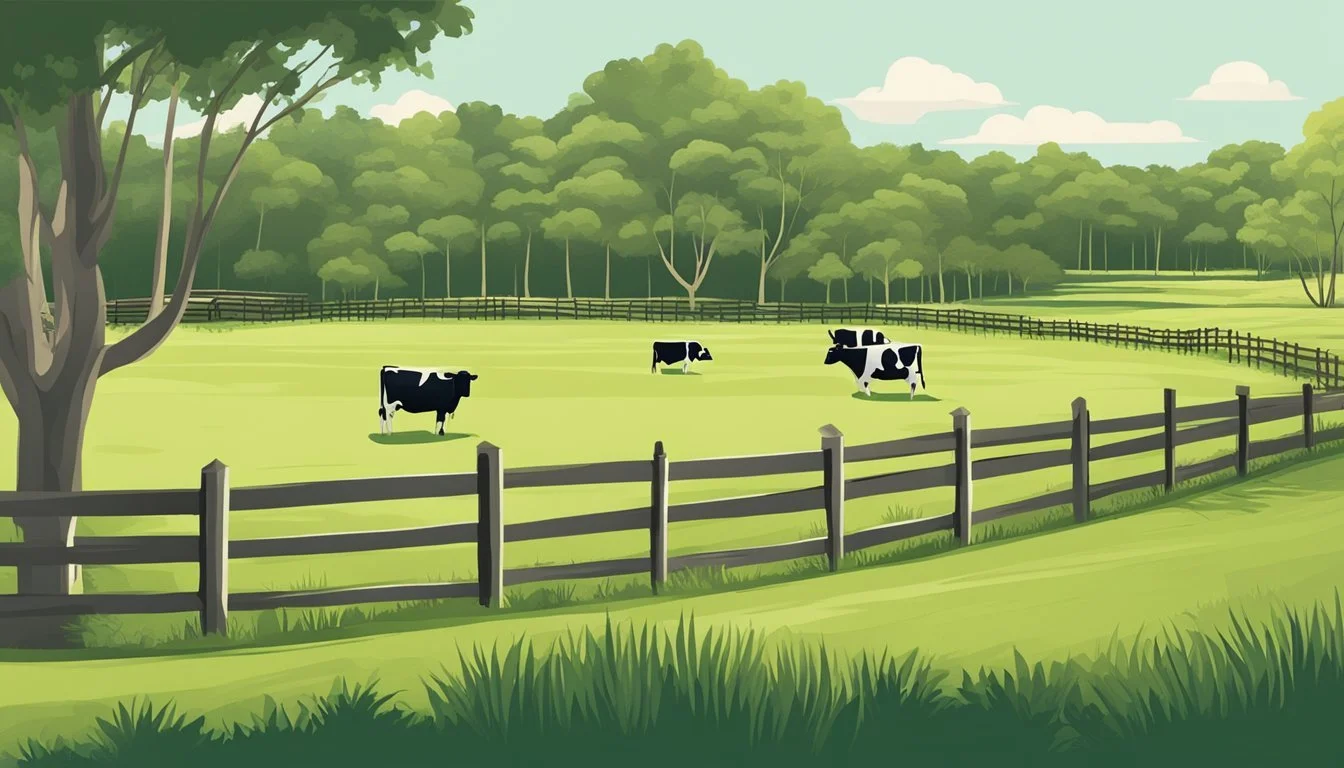Stocking Rate Florida
Optimal Cows Per Acre for Sustainable Grazing
Determining the appropriate stocking rate is a vital component of sustainable livestock management, particularly in Florida where pasture quality can vary significantly. Stocking rate refers to the number of animals per unit area of land for a certain period, affecting both animal health and pasture condition. In Florida, the climate and pasture types, such as bahiagrass and bermudagrass, play critical roles in establishing how many cows a property can support.
For Florida ranchers, the goal is to balance the number of cows with the available forage to prevent overgrazing and soil degradation. Recommendations for general stocking density in the state suggest ranges from 1.5 to 4 acres per cow for bahiagrass pastures, and 1 to 3 acres per cow for bermudagrass, stargrass, and limpograss pastures. These guidelines, however, are not one-size-fits-all; they vary depending on pasture quality, management practices, and rainfall patterns. Therefore, ranchers must assess their property's specific conditions to determine an optimal stocking rate.
To sustainably manage a ranch, it's necessary to continually monitor pasture conditions and adjust the number of cows accordingly. This adaptable approach ensures that the carrying capacity of the land is not exceeded, maintaining a productive environment for both cattle and forage over time. Properly managing grazing pressure safeguards against the deterioration of the valuable pastureland that is crucial for Florida's cattle industry.
Understanding Stocking Rate
When managing pastureland in Florida, knowing the stocking rate is crucial for balancing livestock health with the sustainable use of resources.
Defining Stocking Rate
Stocking rate is the expression of the number of livestock units that can be supported on a unit of land for a certain period. It is typically measured in animal units (AU) per acre—where one animal unit is defined as a 1,000-pound cow. The exact weight can vary for different classes of cows. For example, a 1,200-pound cow could be considered as 1.2 AU.
Formula: Stocking Rate = Number of Animals / Land Area
Example: 50 head of 1,000-lb cows on 200 acres would be calculated as 200 acres / 50 AU = 4 acres per AU.
Importance of Stocking Rate
Determining the appropriate stocking rate is fundamental for maintaining pasture health and productivity. It influences:
Grazing pressure: The density of cows per acre.
Forage utilization: The consumption of available vegetation by cows.
Carrying capacity: The maximum number of animals the land can sustain without degradation.
Factors affecting Stocking Rate in Florida:
Forage availability: Generally lower in unirrigated land compared to irrigated pastures.
Seasonality: Grazing can vary due to weather patterns such as the wet and dry seasons in Florida.
Land fertility and management practices: Can increase or decrease carrying capacity.
Determining Factors for Stocking Rate
When considering how many cows a property can support in Florida, the stocking rate is influenced by several key components: the quality and productivity of the pasture, the specific needs and consumption patterns of the livestock, and the overall size and classification of the property.
Pasture Quality and Forage Production
Pasture quality profoundly affects the stocking rate, as it determines the forage yield — the amount of edible plant material that the land produces. In Florida, common pasture types such as bahiagrass may support a stocking density ranging from 1.5-4 acres per cow, while bermudagrass, stargrass, and limpograss pastures can usually accommodate 1-3 acres per cow. Properties classified as native range often require more land per cow, anywhere from 5-25 acres per cow. Forage quantity and quality are influenced by location-specific factors such as soil fertility, rainfall patterns, and topography.
Livestock Needs and Forage Consumption
Livestock breeds vary in their forage consumption needs, with some cows needing more pasture than others depending on their diet, which can include a mix of grass and grains. A standard measure used for assessing livestock feed requirements is the Animal Unit (AU), where one AU represents a 1000-pound steer consuming about 3% of body weight per day. For example, Florida cattle breeds may average 800 pounds, requiring adjustments in the stocking rate calculation to match their specific consumption rates.
Property Size and Agricultural Classification
The property's total land area and its agricultural classification are critical factors that determine how many cows it can support. The actual stocking rate can be directly calculated by dividing the land area by the combined requirements of the livestock for the grazing season. For instance, an operation with 50 head of 1,000-pound cows on 200 acres would have a stocking rate of 0.33 acres per AU per month or 4 acres per AU per year. It is also important to note that the agricultural classification may dictate the type of forage resources available and impact the stocking rate.
Stocking Rate Calculations
Determining the appropriate stocking rate is crucial for the sustainability of pastureland and the well-being of cattle. The calculations involve understanding Animal Units and the concept of Animal Unit Month, which are key to ensure that a property supports its cattle effectively without overgrazing.
Calculating Animal Units
An Animal Unit (AU) is a standard used to compare different livestock species based on their forage demands relative to a 1,000-pound cow with a calf. To calculate the number of animal units on one's property, one can use the formula:
AU = (Weight of Animal / 1000) x (Number of Animals)
For example, if an individual has cows that weigh 1200 pounds each, the calculation would be:
AU = (1200 / 1000) x (Number of Cows)
This formula allows for the estimation of the total forage demand by all animals on the property.
Animal Unit Month Concept
An Animal Unit Month (AUM) represents the amount of forage needed to sustain one animal unit for one month. Knowing the AUM of the property helps one calculate the carrying capacity of the land. For example, in Florida, pastureland can range from handling 1.5 to 4 acres per cow, depending on the grass type and quality. The carrying capacity can be expressed as follows:
Carrying Capacity (AUM) = Total Available Acres / AUM per Animal Unit
This calculation ensures that each animal has enough forage for a month. One can adjust for the number of months grazed and forage availability to provide a stocking rate specific to their property and livestock.
Florida-Specific Considerations
When considering how many cows per acre a property in Florida can support, several local factors come into play that directly impact stocking rates. This includes local regulations, the unique plant communities and grasses found in Florida, and the variable precipitation patterns the state experiences.
Local Zoning and Agricultural Exemption
Local zoning laws may affect the number of livestock allowed on a property. Properties must adhere to county-specific guidelines that regulate agricultural practices. Obtaining an agricultural exemption is crucial as it impacts property taxes and may influence the financial viability of the livestock operation.
Plant Community and Grasses in Florida
The variety of grasses in Florida, including bahiagrass, bermudagrass, stargrass, and limpograss, dictate different stocking densities. For instance, common recommendations suggest:
Bahiagrass: 1.5-4 acres/cow
Bermudagrass, Stargrass, & Limpograss: 1-3 acres/cow
Native Range: 5-25 acres/cow
These grasses, along with seasonal plantings such as rye and clover, are integral to setting appropriate stocking rates due to their varying nutritional values and growth patterns.
Precipitation and Seasonal Changes
Florida's precipitation levels and seasonal changes greatly influence forage availability. The state's grazing season can be extended or shortened based on rainfall patterns, which directly impacts how much forage is produced and, subsequently, how many cows the land can support. Proper management practices must take into account the wet summers and drier winters, adjusting stocking rates accordingly to prevent overgrazing and maintain pasture health.
Effective Pasture Management
Managing pasture effectively entails strategic planning to optimize forage use while maintaining soil health and ensuring livestock well-being. Precision in grazing schedules and diversity in livestock are instrumental for sustaining productivity.
Rotational Grazing Implementation
Rotational grazing is a practice where livestock are moved between pastures, or paddocks, to allow forage recovery. This system can be particularly effective in Florida's varied climate. For implementation, divide pastures into paddocks and rotate livestock on a schedule based on forage growth, typically allowing rest periods of 20-30 days.
Overgrazing Risks and Soil Health
Overgrazing occurs when plants are not given adequate time to recover before being grazed again, leading to weakened root systems and soil erosion. It's crucial to monitor grazing patterns to protect soil health. Sustainable grazing avoids bare patches and maintains ground cover, reducing erosion and improving water infiltration.
Livestock Diversity and Stocking Balance
Balancing different species, such as cows, goats, chickens, and horses, can optimize pasture use. Each species grazes differently, which can reduce weeds and improve forage quality. For instance, goats prefer brush and weeds while cows are grazers, which can complement each other on the same acreage if properly managed.
Utilization Rate for Forage
Utilization rate is the percentage of forage consumed by the livestock. An ideal rate is typically between 25-35%. This ensures that livestock have enough quality forage while the pasture can regenerate effectively. Monitoring and adjusting livestock numbers according to forage availability are essential in preventing overgrazing and maintaining high forage quality.
Supplementary Information
When considering how many cows per acre a property in Florida can support, comprehensive planning and a clear understanding of property-specific variables are essential. This section delves into aspects that influence the capacity for cattle production on Florida lands.
Developing a Cattle Production Business Plan
A detailed business plan is fundamental for any cattle operation. Such a plan should account for the carrying capacity of the land which varies across Florida, with general stocking density ranging from 1.5 to 4 acres per cow for bahiagrass to 5-25 acres per cow on native range. The business plan must include:
Estimated costs for necessary infrastructure
A financial forecast including potential profit margins
A marketing strategy for the beef or dairy produced
Working with a Property Appraiser
Engaging a property appraiser who specializes in agricultural properties can be highly beneficial. They provide accurate valuations of the land and offer insights into its potential for cattle production based on topography, forage availability, and soil quality. They can assist in maximizing the property's value by identifying:
Optimal areas for grazing
Land improvements that can raise property value
Legal considerations like zoning laws and water rights
Considerations for Shelter and Shade
In Florida's climate, providing adequate shelter and shade is crucial for animal welfare and productivity. Structures like barns or shaded areas need to be factored into the stocking rate calculation as they occupy land and resources. Factors to consider include:
Natural shade from trees
Man-made shelters that are cost-effective and durable
Proper ventilation to reduce heat stress on the cattle
By integrating these supplementary considerations, landowners and cattle producers in Florida can make informed decisions to ensure the longevity and success of their cattle operations.
Conclusion
Determining the appropriate stocking rate for a property in Florida is essential to the success of an agricultural enterprise involving cattle. Property owners should consider the types of forage resources available and their capacity to support livestock. As research indicates, recommended rates for different grasses vary:
Bahiagrass: 1.5-4 acres/cow
Bermudagrass, stargrass, and limpograss: 1-3 acres/cow
Native range: 5-25 acres/cow
These guidelines are foundational, but each property requires a tailored approach. To maintain both animal and forage health, it's crucial to apply a calculated stocking rate that aligns with the unique aspects of the land, the climate, and the forage production rates.
Farmers and ranchers must regularly assess their cattle's performance and the condition of their forage resource. They should also factor in whether the available forage can sustain the herd throughout various seasons and weather conditions.
In the context of sustainability in agriculture, overstocking can lead to land degradation and lower animal performance, whereas understocking might result in underutilized resources. Therefore, continuous monitoring and adjusting of stocking rates are imperative for long-term productivity and environmental stewardship.
In summary, successful livestock management integrates established scientific recommendations with ongoing observation and adaptation. Ranchers who adopt this approach can optimize their land's carrying capacity, thereby promoting animal welfare and economic viability.





